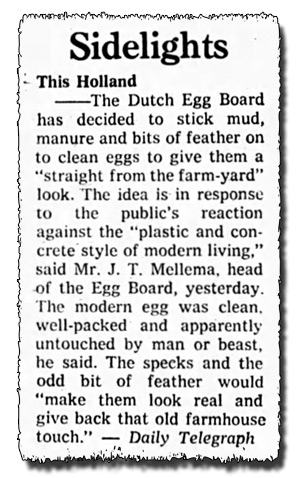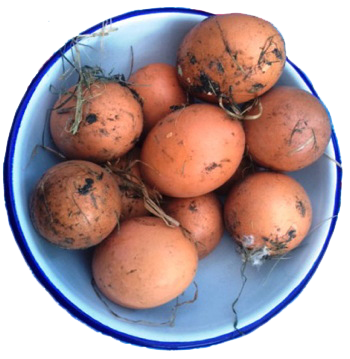In 1973, the Dutch egg industry noted a drop in sales. After studying the situation, its analysts decided that the problem was that grocery-store shoppers were put off by the antiseptic appearance of the factory-cleaned eggs on the shelves. To consumers, the sparkling clean eggs seemed to represent the "plastic and concrete style of modern living."
To remedy this, the Dutch Egg Board decided to stick mud, manure, and bits of feather onto the eggs (after they had been cleaned) in order to artificially give them that "straight from the farmyard look."
J.T. Mellema, head of the Egg Board, noted that a bit of carefully placed dirt would make the eggs "look real and give back that old farmhouse touch."
Source:
New Scientist - Feb 1, 1973

The Ottawa Journal - Mar 3, 1973



Comments
>stick manure on it
sound perfectly logical to me